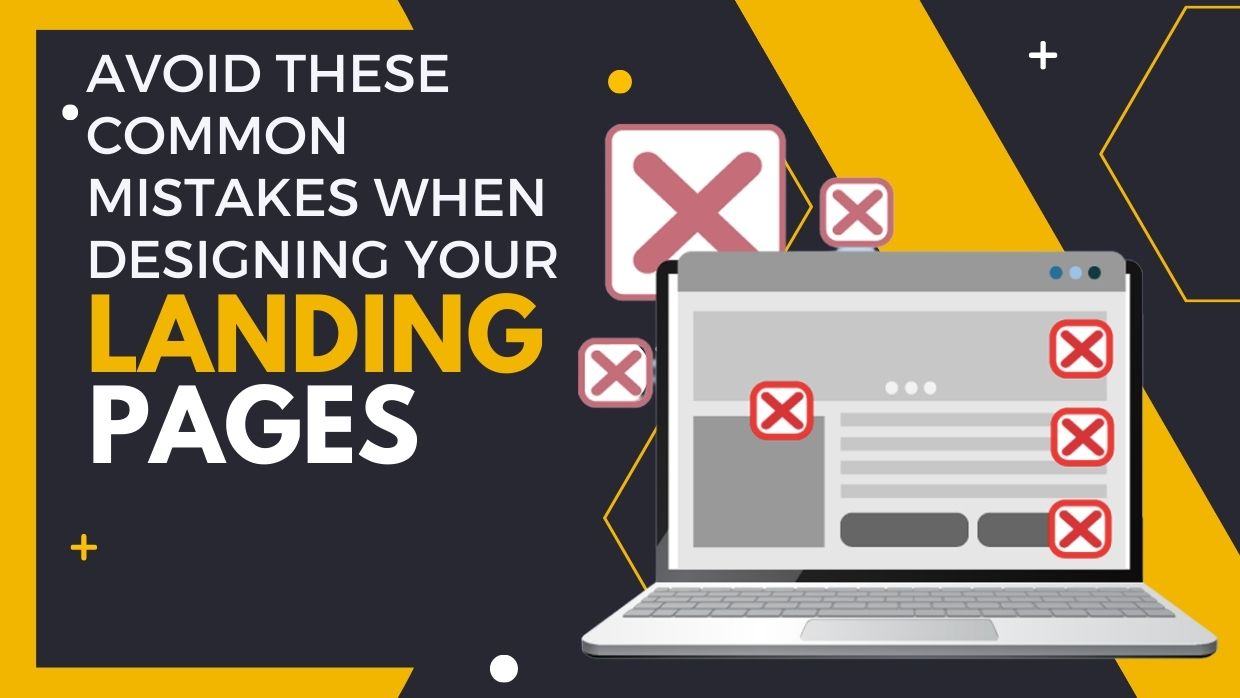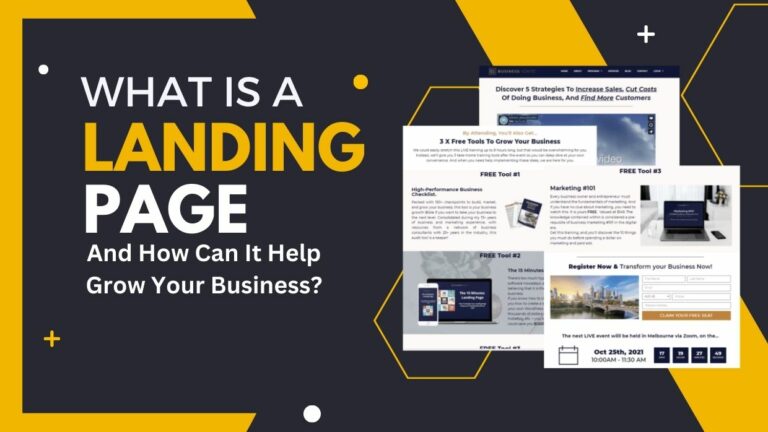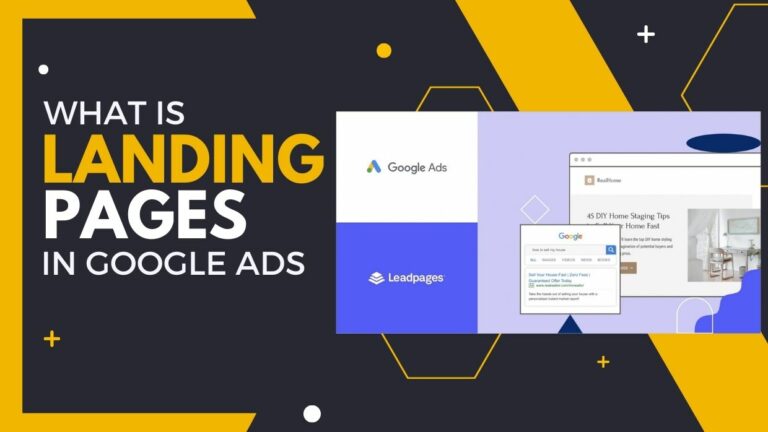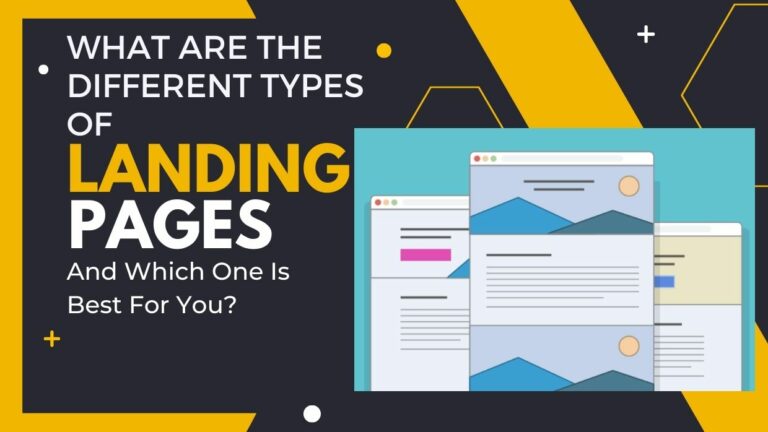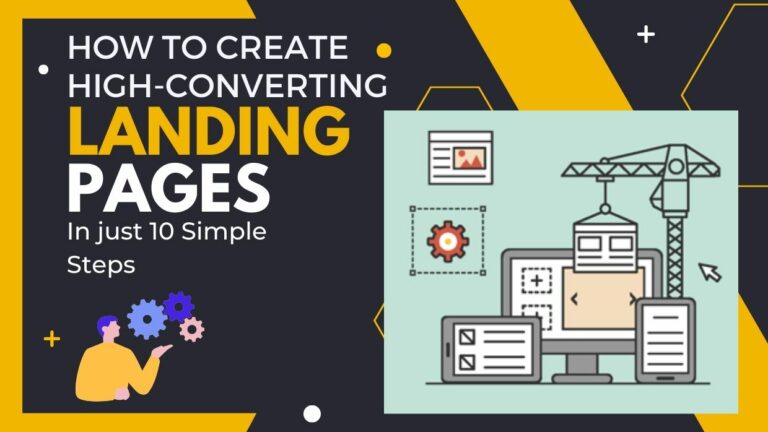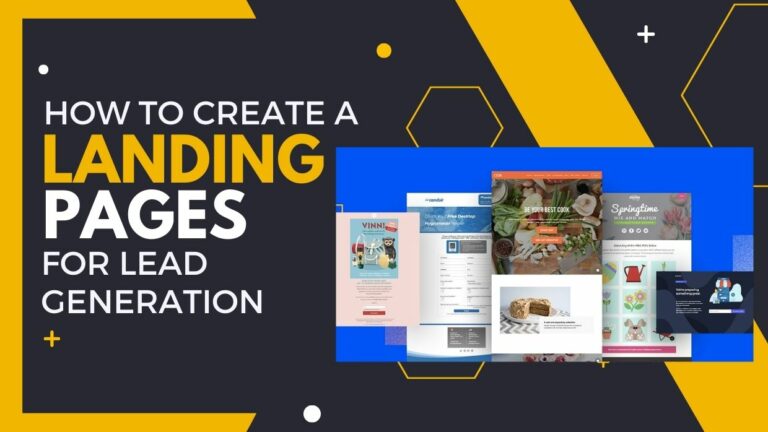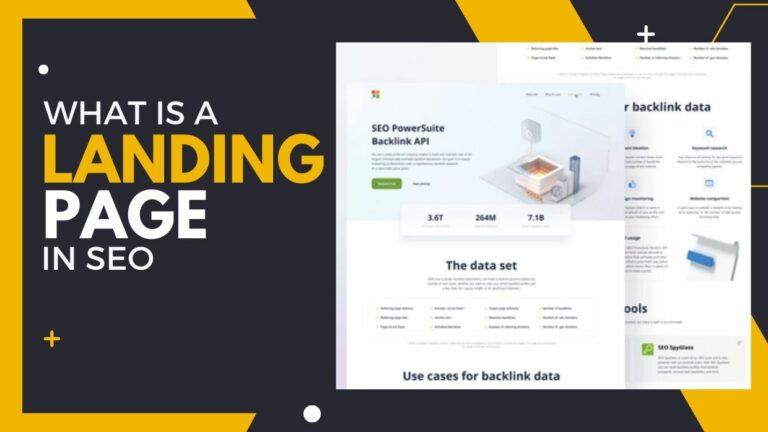7 Most Common Landing Pages Mistakes
Read on to find out “7 Most Common Landing Pages Mistakes”!Are you creating a landing page for your website or blog? While there are many things to consider when designing one, there are some common mistakes that you should avoid in order to ensure the success of your page. In this article, I will be identifying and discussing these common mistakes so that you can take steps to avoid them.
Best Landing Page Example
When it comes to designing your landing pages, there are a few common mistakes that you’ll want to avoid. Here’s a quick rundown of some of the most common mistakes, along with an example of what NOT to do:
- Don’t make your landing page too complicated or cluttered.
Your landing page should be clean and simple, with a clear call-to-action that is easy to spot. This example from Apple is a great example of a well-designed landing page:
- Don’t use generic stock photos.
Your photos should be high quality and relevant to your product or service. Using generic stock photos can make your landing page look cheap and unprofessional. This example from Airbnb shows how using real photos can make your landing page more engaging:
- Don’t use long blocks of text.
Keep your text short and to the point. Long blocks of text are difficult to read and will likely bore your visitors. This example from Google uses short, concise copy that is easy to scan:
What Are The Key Elements Of A Highly Effective Landing Page?
Common Mistakes to Avoid
- Not having a clear objective for your landing page. Every landing page should have a single, clear objective. This could be anything from subscribing to a newsletter to purchasing a product. Without a clear objective, your visitors will get confused and leave without taking any action.
- Not designing your landing page for your target audience. It’s important to design your landing page with your target audience in mind. Consider what they would want to see on the page and what would persuade them to take the desired action.
- Making your form too long or complicated. Keep your forms short and simple, otherwise, you’ll risk losing potential subscribers or customers. Only ask for the essential information that you need and make it easy for people to fill out the form by using clear labels and instructions.
- Forgetting to include a call-to-action (CTA). A CTA is essential on any landing page as it tells visitors what you want them to do next – whether that’s subscribing to your newsletter, downloading a free eBook, or making a purchase. Make sure your CTA is visible and stands out from the rest of the content on the page.
- Not testing your landing page before launch. Always test your landing page before making it live – this includes testing the forms, buttons, links, and overall user experience. By doing this, you can fix any errors or glitches before they cause any major problems down the line.
Lack of a Clear Call-to-Action
When designing your landing page, be sure to include a clear call-to-action (CTA). Your CTA should be easy to spot and explain what the user should do next. Without a clear CTA, users may become confused or lost, and you may miss out on potential conversions.
What Are The Different Types Of Landing Pages And Which One Is Best For You?
Poorly Written Content
When it comes to your landing page design, the last thing you want is for your hard work to be undone by poorly written content. Unfortunately, this is a mistake that far too many businesses make.
Your landing page is the first thing potential customers will see when they visit your website, so it’s important to make a good impression. This means having well-written, engaging content that clearly explains what your business does and why people should choose you over your competitors.
Here are some common mistakes to avoid when writing your landing page content:
- Failing to clarify what your business does – Your landing page should immediately make it clear what your business does and what products or services you offer. Don’t assume that visitors will already know this information; be explicit and concise in your explanation.
- Being too wordy – Landing pages should be short and to the point; potential customers shouldn’t have to wade through paragraphs of text to find out what you do. Get straight to the point and use simple language that can be easily understood.
- Writing for yourself, not your customer – It’s important to remember who your target audience is when writing landing page content. Write in a way that appeals to their needs and interests, not in a way that promotes your own agenda.
- Making it all about you – Your landing page isn’t the time or place to promote yourself; it’s about connecting with potential customers. Make sure the content is focused on their needs, not yours.
- Being too sales-y – You want to make it clear that you are selling a product or service, but you don’t want to come across as pushy or overly promotional. Balance promotional language and persuasive elements with informative content that is easy to digest.
By avoiding these common mistakes and writing compelling landing page content, you can ensure your website visitors get the best possible first impression of your business.
Too Many Distractions
When it comes to landing pages, less is more. That means you should avoid adding too many distractions that could take away from your conversion goal.
Some common distractions to avoid include:
- Too much text: Keep your text concise and to the point. Use bullet points when possible to make it easier for visitors to scan.
- Too many images: Don’t overwhelm visitors with too many images. Stick to one or two key images that support your message.
- Clutter: Keep your page clean and free of any unnecessary clutter. This will help keep visitors focused on your conversion goal.
- Auto-playing videos: Avoid autoplay videos or audio as they can be intrusive and annoying. If you do use video, make sure visitors can control when it starts and stops playing.
Not Optimizing for Mobile Devices
One of the most common mistakes businesses make when designing their landing pages is not optimizing for mobile devices. In today’s world, it’s essential that your website is accessible and easy to use on all devices, including smartphones and tablets.
If your landing page isn’t optimized for mobile, you could be missing out on a lot of potential leads and customers. Mobile users have different needs and expectations than desktop users, so it’s important to design your landing page with them in mind.
Here are a few tips for optimizing your landing page for mobile:
- Use a responsive design: This ensures that your page will look great on all devices, regardless of screen size.
- Keep it simple: Mobile users are often looking for quick and easy information. Avoid overwhelming them with too much text or too many options.
- Use large fonts: Small text can be difficult to read on a small screen. Make sure your headlines and call-to-actions are big and easy to read.
- Use short forms: Long forms can be frustrating to fill out on a mobile device. Keep your forms short and sweet, and only ask for essential information.
By following these tips, you can ensure that your landing page is mobile-friendly and more likely to convert visitors into leads or customers.
Not A/B Testing Design Variations
There are a lot of design choices that go into creating a landing page. And while it’s important to consider all of them, it’s also important not to get too bogged down in the details. One common mistake is spending too much time A/B testing small design variations.
Sure, it’s important to test different elements on your page to see what works best. But if you’re spending hours tweaking the color of your button or the size of your headline, you’re likely missing the bigger picture. There are many more important factors to consider when designing your landing page, so don’t get caught up in the small stuff.
Insufficient Use of Images and Video
When it comes to creating successful landing pages, one of the most common mistakes is the insufficient to use of images and video.
While the written word is important for conveying information and building trust, visuals are what will really capture your audience’s attention and help them understand your message. Images and video can also be used to create an emotional connection with your visitors, which is essential for getting them to take action.
Make sure you include high-quality visuals on your landing pages, and that they’re relevant to the offer or product you’re promoting. Avoid using generic stock photos; instead, use real-life images or videos that show your offer in action. And don’t forget to add a call-to-action (CTA) button to your images and videos so visitors know what to do next.
Ignoring the User Experience
Many businesses make the mistake of ignoring the user experience when designing their landing pages. This can have a negative impact on the overall effectiveness of the page and can lead to a high bounce rate.
There are a few key things to keep in mind when designing your landing pages, in order to ensure a positive user experience. First, make sure that your page is easy to navigate and understand. There should be a clear path for users to follow, and all of the information should be easy to find.
Secondly, your page should be visually appealing and engaging. Use strong visuals and compelling copy to grab attention and keep users interested. Finally, make sure that your page loads quickly and smoothly. Users will not wait around for a slow page, so it’s important to optimize your site for speed.
By keeping these key points in mind, you can create landing pages that provide a positive user experience and are more likely to convert visitors into customers or leads.
How To Create High-Converting Landing Pages In 10 Simple Steps
Conclusion
Landing pages are an essential part of any digital marketing strategy, and they can make or break the success of your campaigns. With that in mind, it’s important to be aware of what mistakes to avoid when designing a landing page so as not to waste precious resources. We hope this article has given you some insight into common landing page design pitfalls and how best to avoid them. Keep these tips in mind for your next project and you’ll be sure to create a successful landing page!

